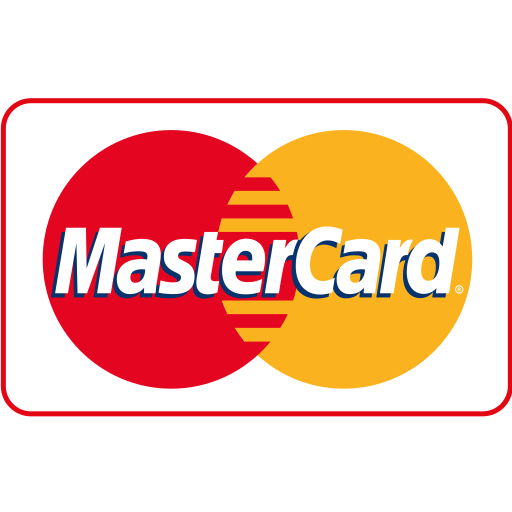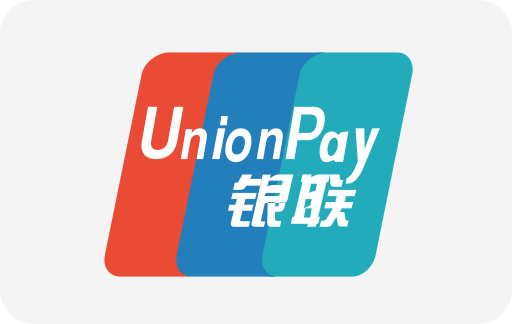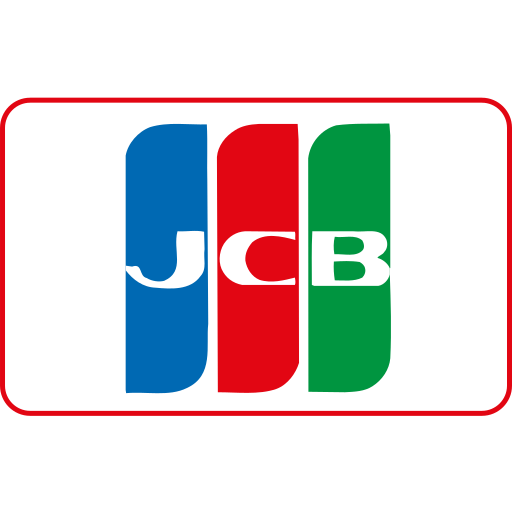
Lessons Beyond the Hype
Good day, esteemed colleagues and media professionals. Today, I bring you a candid and unvarnished look at search engine optimization (SEO) that many so-called gurus overlook or simplify. My journey into SEO began not with flawless victories but with tangible setbacks, including a startup failure that was both humbling and instructive. Over time, through firsthand experience and relentless learning, my understanding of SEO evolved from textbook theories to practical, results-driven strategies that can genuinely transform a digital presence.
In this comprehensive guide, tailored especially for business owners venturing into online marketing in Canada and beyond, I will unveil the less glamorous realities and actionable insights that most SEO experts conveniently skip. Prepare to dive deep into real-life scenarios, critical technical nuances, and a strategic mindset shift that will empower you to build sustainable organic growth.
The Turning Point: From Startup Failure to SEO Mastery
When I launched my first startup, I approached SEO with the enthusiasm of a beginner but the naivety of an amateur. My strategy was simplistic: stuff keywords, build a few backlinks, and expect miracles. Predictably, the outcomes were lackluster. Our website barely attracted traffic, and albeit modest, paying customers were scarce. The final blow was a failed funding round, forcing a painful pivot and closure.
This failure, however, became a crucible of deep learning. I realized that SEO isn't about shortcuts or quick fixes. It involves consumer psychology, website architecture, content quality, technical health, and patience. The turning point was when I committed to understanding search engines not as entities to trick but as partners to engage with through quality content and superior user experiences.
SEO Myths Debunked: What Gurus Often Miss
Myth 1: Keyword Density Is King
Many gurus obsess over keyword density, recommending precise percentages or keyword stuffing. The reality is search algorithms have evolved to value semantic relevance and user intent more than raw repetition. Overusing keywords often leads to penalties and degraded user experience.
Myth 2: More Backlinks Always Mean Better Rankings
While backlinks remain important, quality trumps quantity. Spammy or irrelevant backlinks can harm rather than help. Context, trustworthiness, and organic acquisition matter greatly.
Myth 3: SEO Results Are Instantaneous
Patience is critical. SEO builds momentum over months. Expecting immediate leaps is unrealistic and invites disillusionment.
Key Insight: Focus on User Experience, Not Just Algorithms
The fundamental secret is to prioritize website visitors first. Google’s mission is to connect users with the best, most relevant content. Aligning your strategy with this goal shifts the approach from gaming algorithms to creating real value.
Strategic SEO Components: Practical Evolution of My Approach
1. Comprehensive Keyword Research Beyond Search Volume
Early on, I chased high-volume keywords with fierce competition, often at great expense with little ROI. I learned to focus on long-tail keywords and user intent, especially localized terms for the Canadian market such as "affordable SEO services in Toronto" or "best French-speaking SEO consultant in Quebec". This refined approach improves relevance and conversion potential.
2. Content Quality: Storytelling Meets Optimization
Content became the centerpiece. But it wasn’t just about SEO-friendly copy; it was about crafting narratives meaningful to my audience. For example, instead of generic product descriptions, I shared use-cases, client success stories, and FAQs addressing specific pain points.
3. Technical SEO Hygiene
Website speed, mobile responsiveness, schema markup, and secure HTTPS protocols became non-negotiable. Simple technical neglect can sabotage the most polished content and outreach efforts.
4. Link Building as Relationship Building
Rather than submitting to random directories or buying links, I invested time in networking with industry bloggers, contributing guest posts, and participating in community discussions, organically earning backlinks that boosted credibility.
5. Analytics and Continuous Adaptation
I adopted a data-driven mindset, continually analyzing tools like Google Analytics and Search Console to monitor traffic patterns, bounce rates, and keyword rankings. Quick adjustments based on real data prevented stagnation.
Example: Implementing a Localized SEO Campaign in Canada
Consider a hypothetical mid-sized Canadian artisanal bakery aiming to expand its online footprint. The naive approach might be to optimize for broad keywords like "bakery" or "cakes". However, a practical, evolved SEO strategy would include:
- Targeting geo-specific keywords such as "best gluten-free bakery in Vancouver".
- Creating content around local events, seasonal Canadian holidays, and customer stories.
- Optimizing Google My Business listings with accurate contact info and customer reviews.
- Ensuring mobile-friendly site design given mobile usage patterns in urban Canadian areas.
This localized focus aligns marketing investment with audience relevance and conversion probability, maximizing content resonance and search visibility.
Budgeting for SEO: Realistic Cost Considerations
Many business owners expect minimal investment for impactful SEO, which is unrealistic. Here’s a pragmatic budget estimate breakdown, expressed in Canadian dollars (CAD), for an effective mid-level SEO campaign:
| SEO Component | Estimated Monthly Cost (CAD) | Description |
|---|---|---|
| Keyword Research & Strategy | 400 - 800 | Extensive keyword discovery, competition analysis, and strategy formulation. |
| Content Creation & Optimization | 800 - 1,500 | High-quality blogs, landing pages, and multimedia content tailored to target audience. |
| Technical SEO Enhancements | 300 - 700 | Website audits, fixing crawl errors, speed optimization, schema markup. |
| Link Building & Outreach | 600 - 1,200 | Developing relationships, guest posting, and earning quality backlinks. |
| Analytics & Reporting | 200 - 400 | Using tools to monitor performance, testing, and adjustments. |
| Total Monthly Investment | 2,300 - 4,600 | Aggregated comprehensive SEO services |
Bear in mind that results compound over time and the return on this investment often exceeds paid advertising for sustainable traffic.
The Role of Tools and Automation in My SEO Journey
Initially, I manually tracked everything, which quickly became inefficient and error-prone. Incorporating SEO tools like SEMrush, Ahrefs, Screaming Frog, and Google Data Studio allowed me to automate routine tasks, identify new keyword opportunities, and maintain competitive analysis.
Interestingly, while tools are powerful, relying solely on them without strategic interpretation can mislead efforts. Tools should empower human insight rather than replace it.
Embracing Continuous Learning and Adaptation
SEO is a moving target; algorithm updates, user behaviors, and technology trends require ongoing education. Attending conferences, participating in webinars (including this very one!), and staying current with credible SEO research enabled me to pivot tactics when needed.
For example, early adoption of AI-driven content analysis and understanding Google’s BERT update helped me tailor content for natural language processing, improving relevance.
Common Pitfalls to Avoid
- Ignoring Mobile Optimization: Over half of web traffic originates from mobile devices, particularly poignant in Canadian metropolitan regions.
- Neglecting Local SEO: Businesses targeting Canadian customers must leverage local listings and culture-specific content to gain traction.
- Overlooking Site Security: HTTPS is standard and affects rankings; unsecured sites penalize trust and SEO.
- Following Black-Hat SEO: Quick wins through deceptive tactics often lead to penalties and loss of credibility.
Putting It All Together: An SEO Roadmap for Business Owners
Here is a step-by-step framework to transition from theory to practice:
- Audit Your Current SEO Status: Identify strengths, weaknesses, and technical issues.
- Define Your Target Audience and Goals: Understand who you want to reach, why, and what success looks like.
- Conduct Strategic Keyword Research: Use tools intelligently and focus on intent and local relevance.
- Develop High-Quality, Engaging Content: Solve problems, tell stories, build trust.
- Optimize Technical SEO: Ensure your site’s architecture supports crawlability, speed, and security.
- Build Quality Backlinks: Create relationships and collaborations for organic growth.
- Utilize Analytics and Iterate: Measure, learn, and adapt continuously.
Remember, this roadmap demands commitment but offers highly rewarding results for business owners who embrace it wholeheartedly.
Final Thoughts
My personal voyage from failure to SEO proficiency underscores that success in digital marketing requires authenticity, strategic thinking, and resilience. By focusing on user value, embracing the evolving technological landscape, and avoiding the pitfalls commonly glossed over by popular SEO advice, business owners—especially here in Canada—can unlock genuine, lasting search engine visibility.
Thank you for your attention, and I look forward to engaging in further discussions and sharing experiences during this International Media and Communication Conference.
Lessons Beyond the Hype
Good day, esteemed colleagues and media professionals. Today, I bring you a candid and unvarnished look at search engine optimization (SEO) that many so-called gurus overlook or simplify. My journey into SEO began not with flawless victories but with tangible setbacks, including a startup failure that was both humbling and instructive. Over time, through firsthand experience and relentless learning, my understanding of SEO evolved from textbook theories to practical, results-driven strategies that can genuinely transform a digital presence.
In this comprehensive guide, tailored especially for business owners venturing into online marketing in Canada and beyond, I will unveil the less glamorous realities and actionable insights that most SEO experts conveniently skip. Prepare to dive deep into real-life scenarios, critical technical nuances, and a strategic mindset shift that will empower you to build sustainable organic growth.
The Turning Point: From Startup Failure to SEO Mastery
When I launched my first startup, I approached SEO with the enthusiasm of a beginner but the naivety of an amateur. My strategy was simplistic: stuff keywords, build a few backlinks, and expect miracles. Predictably, the outcomes were lackluster. Our website barely attracted traffic, and albeit modest, paying customers were scarce. The final blow was a failed funding round, forcing a painful pivot and closure.
This failure, however, became a crucible of deep learning. I realized that SEO isn't about shortcuts or quick fixes. It involves consumer psychology, website architecture, content quality, technical health, and patience. The turning point was when I committed to understanding search engines not as entities to trick but as partners to engage with through quality content and superior user experiences.
SEO Myths Debunked: What Gurus Often Miss
Myth 1: Keyword Density Is King
Many gurus obsess over keyword density, recommending precise percentages or keyword stuffing. The reality is search algorithms have evolved to value semantic relevance and user intent more than raw repetition. Overusing keywords often leads to penalties and degraded user experience.
Myth 2: More Backlinks Always Mean Better Rankings
While backlinks remain important, quality trumps quantity. Spammy or irrelevant backlinks can harm rather than help. Context, trustworthiness, and organic acquisition matter greatly.
Myth 3: SEO Results Are Instantaneous
Patience is critical. SEO builds momentum over months. Expecting immediate leaps is unrealistic and invites disillusionment.
Key Insight: Focus on User Experience, Not Just Algorithms
The fundamental secret is to prioritize website visitors first. Google’s mission is to connect users with the best, most relevant content. Aligning your strategy with this goal shifts the approach from gaming algorithms to creating real value.
Strategic SEO Components: Practical Evolution of My Approach
1. Comprehensive Keyword Research Beyond Search Volume
Early on, I chased high-volume keywords with fierce competition, often at great expense with little ROI. I learned to focus on long-tail keywords and user intent, especially localized terms for the Canadian market such as "affordable SEO services in Toronto" or "best French-speaking SEO consultant in Quebec". This refined approach improves relevance and conversion potential.
2. Content Quality: Storytelling Meets Optimization
Content became the centerpiece. But it wasn’t just about SEO-friendly copy; it was about crafting narratives meaningful to my audience. For example, instead of generic product descriptions, I shared use-cases, client success stories, and FAQs addressing specific pain points.
3. Technical SEO Hygiene
Website speed, mobile responsiveness, schema markup, and secure HTTPS protocols became non-negotiable. Simple technical neglect can sabotage the most polished content and outreach efforts.
4. Link Building as Relationship Building
Rather than submitting to random directories or buying links, I invested time in networking with industry bloggers, contributing guest posts, and participating in community discussions, organically earning backlinks that boosted credibility.
5. Analytics and Continuous Adaptation
I adopted a data-driven mindset, continually analyzing tools like Google Analytics and Search Console to monitor traffic patterns, bounce rates, and keyword rankings. Quick adjustments based on real data prevented stagnation.
Example: Implementing a Localized SEO Campaign in Canada
Consider a hypothetical mid-sized Canadian artisanal bakery aiming to expand its online footprint. The naive approach might be to optimize for broad keywords like "bakery" or "cakes". However, a practical, evolved SEO strategy would include:
- Targeting geo-specific keywords such as "best gluten-free bakery in Vancouver".
- Creating content around local events, seasonal Canadian holidays, and customer stories.
- Optimizing Google My Business listings with accurate contact info and customer reviews.
- Ensuring mobile-friendly site design given mobile usage patterns in urban Canadian areas.
This localized focus aligns marketing investment with audience relevance and conversion probability, maximizing content resonance and search visibility.
Budgeting for SEO: Realistic Cost Considerations
Many business owners expect minimal investment for impactful SEO, which is unrealistic. Here’s a pragmatic budget estimate breakdown, expressed in Canadian dollars (CAD), for an effective mid-level SEO campaign:
| SEO Component | Estimated Monthly Cost (CAD) | Description |
|---|---|---|
| Keyword Research & Strategy | 400 - 800 | Extensive keyword discovery, competition analysis, and strategy formulation. |
| Content Creation & Optimization | 800 - 1,500 | High-quality blogs, landing pages, and multimedia content tailored to target audience. |
| Technical SEO Enhancements | 300 - 700 | Website audits, fixing crawl errors, speed optimization, schema markup. |
| Link Building & Outreach | 600 - 1,200 | Developing relationships, guest posting, and earning quality backlinks. |
| Analytics & Reporting | 200 - 400 | Using tools to monitor performance, testing, and adjustments. |
| Total Monthly Investment | 2,300 - 4,600 | Aggregated comprehensive SEO services |
Bear in mind that results compound over time and the return on this investment often exceeds paid advertising for sustainable traffic.
The Role of Tools and Automation in My SEO Journey
Initially, I manually tracked everything, which quickly became inefficient and error-prone. Incorporating SEO tools like SEMrush, Ahrefs, Screaming Frog, and Google Data Studio allowed me to automate routine tasks, identify new keyword opportunities, and maintain competitive analysis.
Interestingly, while tools are powerful, relying solely on them without strategic interpretation can mislead efforts. Tools should empower human insight rather than replace it.
Embracing Continuous Learning and Adaptation
SEO is a moving target; algorithm updates, user behaviors, and technology trends require ongoing education. Attending conferences, participating in webinars (including this very one!), and staying current with credible SEO research enabled me to pivot tactics when needed.
For example, early adoption of AI-driven content analysis and understanding Google’s BERT update helped me tailor content for natural language processing, improving relevance.
Common Pitfalls to Avoid
- Ignoring Mobile Optimization: Over half of web traffic originates from mobile devices, particularly poignant in Canadian metropolitan regions.
- Neglecting Local SEO: Businesses targeting Canadian customers must leverage local listings and culture-specific content to gain traction.
- Overlooking Site Security: HTTPS is standard and affects rankings; unsecured sites penalize trust and SEO.
- Following Black-Hat SEO: Quick wins through deceptive tactics often lead to penalties and loss of credibility.
Putting It All Together: An SEO Roadmap for Business Owners
Here is a step-by-step framework to transition from theory to practice:
- Audit Your Current SEO Status: Identify strengths, weaknesses, and technical issues.
- Define Your Target Audience and Goals: Understand who you want to reach, why, and what success looks like.
- Conduct Strategic Keyword Research: Use tools intelligently and focus on intent and local relevance.
- Develop High-Quality, Engaging Content: Solve problems, tell stories, build trust.
- Optimize Technical SEO: Ensure your site’s architecture supports crawlability, speed, and security.
- Build Quality Backlinks: Create relationships and collaborations for organic growth.
- Utilize Analytics and Iterate: Measure, learn, and adapt continuously.
Remember, this roadmap demands commitment but offers highly rewarding results for business owners who embrace it wholeheartedly.
Deep Dive: Content Clusters and Topic Authority
One advancement that significantly improved my SEO results was adopting the content cluster model. Instead of creating isolated blog posts, I developed interconnected content groups around core topics. For example, if the core topic was "Canadian Small Business SEO," I produced pillar content explaining broad strategies, supplemented by cluster articles targeting specific subtopics such as "Optimizing Google My Business for Canadian Retailers" or "Leveraging Seasonal Trends in Canada for Local SEO."
This architecture helps search engines understand topical authority and improves internal linking, enhancing user navigation and dwell time.
Mobile-First Indexing: Preparing for the Present and Future
Google predominantly uses mobile versions of websites for indexing and ranking. For Canadian businesses, where mobile smartphone penetration exceeds 80%, this is critical. I revamped my clients’ sites for responsive design, tested them on Google’s Mobile-Friendly Test, and improved loading speeds by compressing images and leveraging browser caching.
Voice Search Optimization: The Emerging Frontier
With the rise of voice assistants like Siri and Google Assistant, optimizing for voice search became essential. Voice queries are more conversational and often longer. Incorporating natural language questions and concise answers into FAQ sections aligns well with voice search patterns. For example, a local Toronto restaurant might optimize for "Where can I find authentic poutine near me?" rather than just "poutine Toronto."
Structured Data and Rich Snippets: Standing Out in the SERPs
Implementing schema markup helped my websites qualify for rich snippets, which enhances visibility in search engine results pages (SERPs). Not only do rich snippets improve click-through rates, but they also lend credibility. For instance, marking up event dates, reviews, pricing, and breadcrumbs contributed to noticeable traffic uplifts.
International SEO Considerations for Canadian Businesses
Canada's bilingual nature and proximity to the U.S. create unique challenges and opportunities. For bilingual SEO, I ensured separate pages with hreflang tags to target both English and French speakers appropriately, preventing duplicate content issues and improving regional relevance.
Additionally, geo-targeting strategies allowed Canadian businesses to dominate local markets before scaling internationally. For example, tailoring content with culturally relevant references and metric units resonated more deeply with local audiences.
Data Privacy and SEO: Navigating Canada's Regulatory Environment
Canada’s stringent privacy laws, including PIPEDA, require careful data handling that impacts SEO and digital marketing. I ensured compliance by implementing clear cookie consent forms, privacy policies, and avoiding intrusive tracking methods that could damage user trust or lead to legal risks. Search engines also reward transparent and trustworthy websites.
Integrating SEO with Other Marketing Channels
SEO should not work in isolation. I integrated SEO insights with social media marketing, email campaigns, and paid search to amplify impact. For example, social media engagement provided signals of content relevance and drove referral traffic, while email newsletters helped nurture leads generated through organic search.
Case Study Snapshot: A Canadian Tech Startup’s SEO Transformation
A Toronto-based technology startup initially struggled with limited organic reach. Our intervention involved:
- Complete website audit addressing technical issues.
- Developing a comprehensive keyword map focusing on niche B2B queries.
- Creating targeted educational content showcasing product use cases relevant to Canadian industries.
- Building authoritative backlinks via partnerships with Canadian tech blogs.
- Monthly performance tracking and iterative strategy adjustments.
Within nine months, organic traffic increased by 250%, conversion rates improved by 40%, and the startup secured multiple enterprise-level clients. This example underscores the cumulative impact of a well-rounded SEO strategy.
Final Thoughts
My personal voyage from failure to SEO proficiency underscores that success in digital marketing requires authenticity, strategic thinking, and resilience. By focusing on user value, embracing the evolving technological landscape, and avoiding the pitfalls commonly glossed over by popular SEO advice, business owners—especially here in Canada—can unlock genuine, lasting search engine visibility.
Thank you for your attention, and I look forward to engaging in further discussions and sharing experiences during this International Media and Communication Conference.
We are the best marketing agency in Canada.
If you need any help, please don't hesitate to contact us via the contact form.















Maple Ranking offers the highest quality website traffic services in Canada. We provide a variety of traffic services for our clients, including website traffic, desktop traffic, mobile traffic, Google traffic, search traffic, eCommerce traffic, YouTube traffic, and TikTok traffic. Our website boasts a 100% customer satisfaction rate, so you can confidently purchase large amounts of SEO traffic online. For just 720 PHP per month, you can immediately increase website traffic, improve SEO performance, and boost sales!
Having trouble choosing a traffic package? Contact us, and our staff will assist you.
Free consultation